In today’s fast-changing world, where innovation is vital for success, every other startup founder continuously looks for intelligent and efficient ways to turn a million-dollar idea into a viable business solution. PoC (Proof of Concept), MVP (Minimum Viable Product), and Prototype lay the foundation and determine the success of a digital product. This is where either a POC, Prototype or MVC comes into the picture, as these three approaches help you validate your product idea and ensure product-market fit before you spend significant funds on your development.
Let’s have a close look at the differences between PoC vs Prototype vs MVP and also explore what to choose when to create a successful digital product.
So, let’s get started!
An Overview of PoC, Prototype, and MVP
PoC, Prototype, and MVP are the foundational elements of the new product development. Proof of concept and Prototype are considered at the pre-product stage, which requires minimal to medium investment. Whereas MVP is a considerable product stage with core functionalities and features. Before we dig deeper into the differences between POC vs Prototype vs MVP, let’s outline the primary purposes:
- Instead of representing various product variations, these concepts indicate different stages of product development.
- MVP development is the most preferred and adopted approach, while PoC and prototyping are the secondary preferences. However, prototyping is more common than PoC.
- In the pre-production stage, PoC and Prototype are used. And in the production stage, MVP is employed.
Here’s what the timeline for your new product development process would look like:
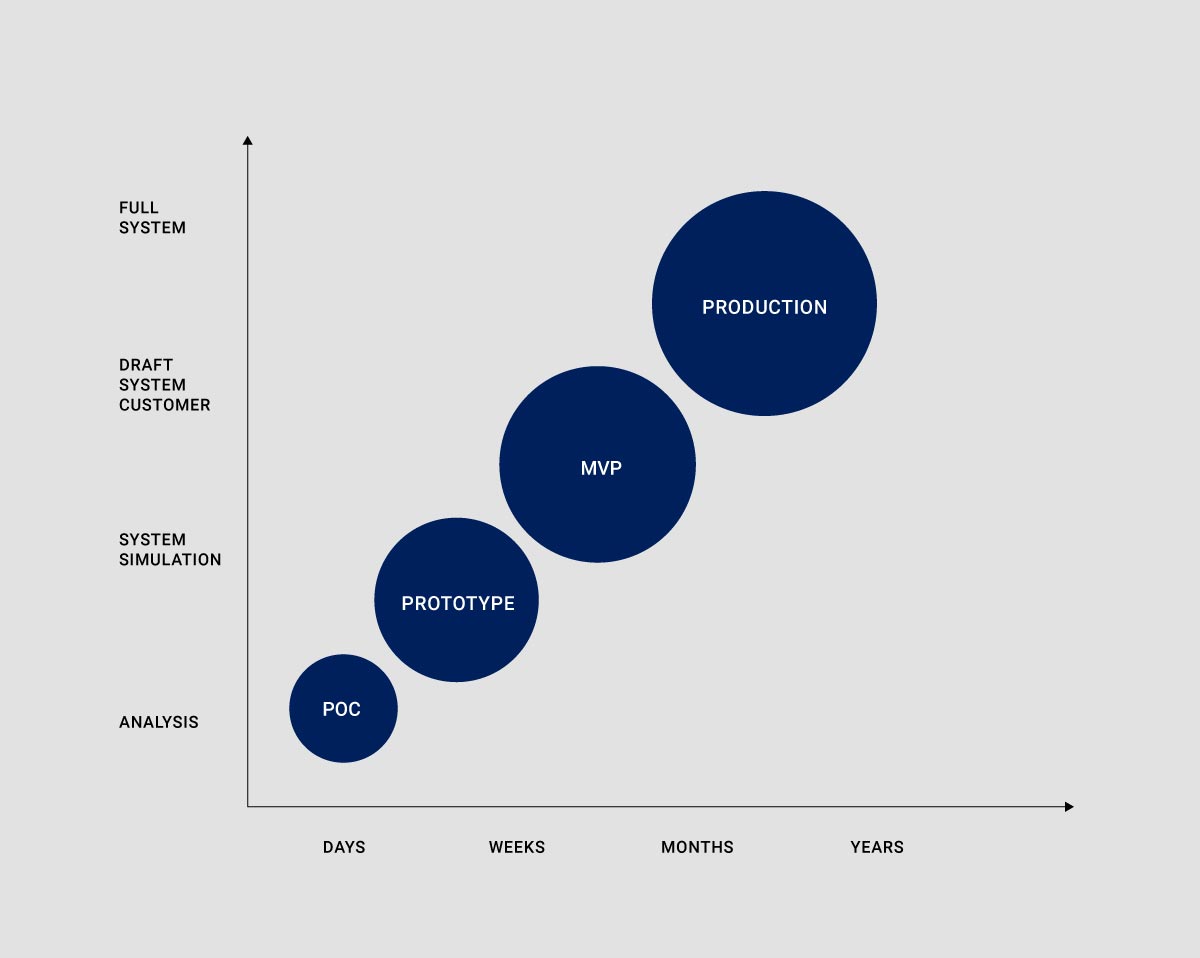
What Is PoC?
A Proof of Concept (PoC) is the demonstration step obtained from a pilot project to determine whether the product idea, business plan, or project plan can be turned into reality or not.
The primary purpose of PoC is to seek market demand for the concept. It helps product owners identify the financial potential minimizing unnecessary risks. Usually, the proof of concept is designed and developed by team members to collect feedback and required insights.
For startups, a PoC helps to demonstrate financial viability and is crucial for developing new products in various sectors and industries such as manufacturing, IT, healthcare, and cybersecurity.
How Does a Proof-of-Concept Work?
PoC is a small internal project carried out at the discovery stage of your product development project. The creation of PoC involves;
- Clear business plan to see your project from a different perspective.
- Simplified introductory design
- Verify your core idea to address the critical issues, and internal process flows. Outcomes are not meant to be shown to the end users.
The PoC validates your idea’s practicality concerning the technical capabilities, resources, and tools. So, if your idea is technically feasible, you can move ahead with the next stage of product development. However, if your idea fails at this stage, PoC helps you save valuable resources, time, and funds in product development.
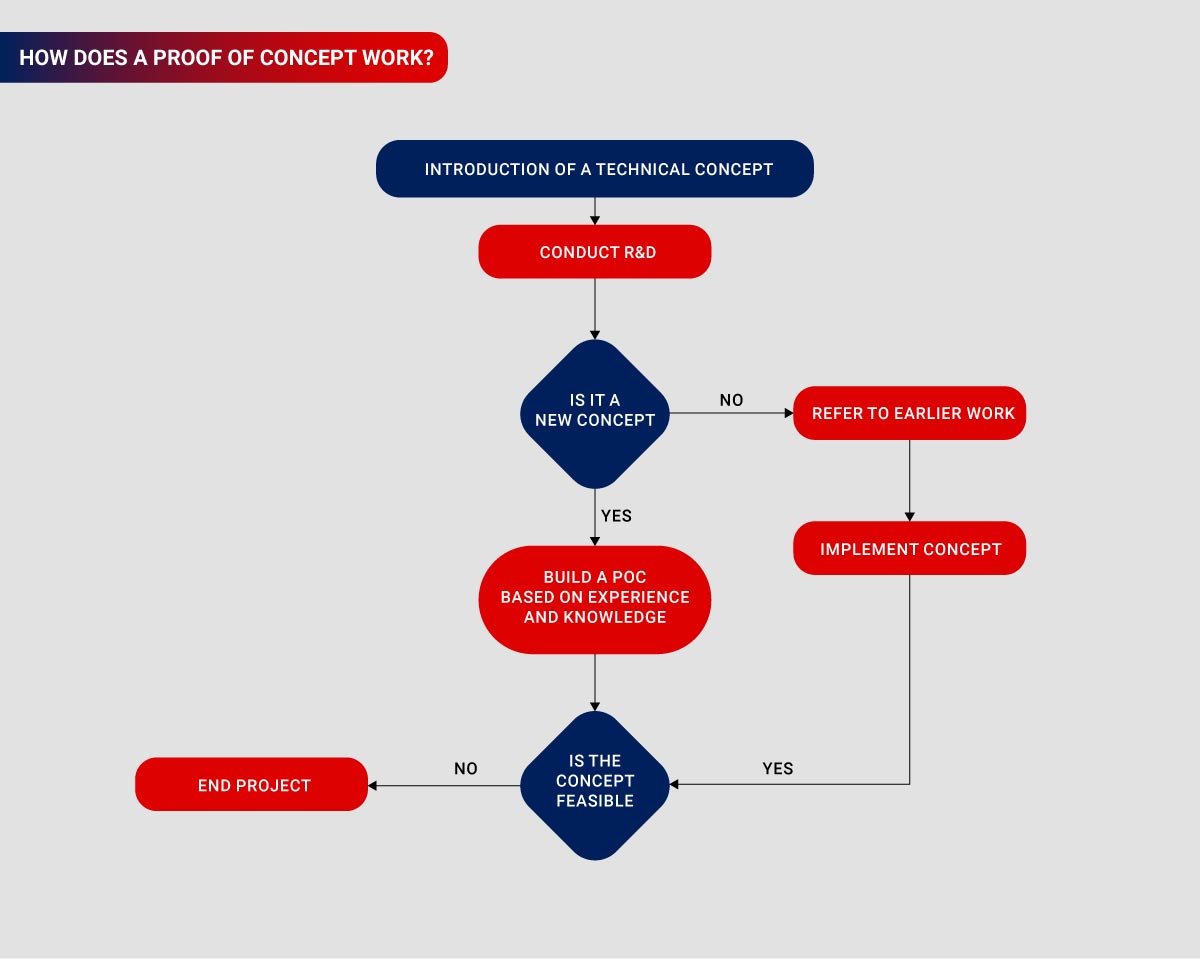
What are the Main Features of PoC?
Here is the minimum set of features of a Proof of Concept (PoC):
- Feasibility Check: It helps you determine if your idea is feasible or not.
- Idea Exploration: You can explore your idea’s potential and check its potential to validate an aspect of software or an idea rather than the whole.
- Implementing a Small Part: It shows you how to implement a small part of your project.
- Early Detection of Risks and Bugs: It helps uncover any major problems or bugs at an early stage of development.
- Cost and Time Saving: It’s a more efficient and cost-effective way to validate features compared to a full-scale project.
- Simple Outcome: The result is straightforward, with either a yes or no answer to whether your concept works.
PoC Examples from Successful Startups
Here are two successful PoC examples from giants like Twitter and Walmart:
- Twitter launched an initial version of OAuth, called Application-Only Authentication, as a closed beta on Google’s discussion group. This PoC code demonstrated the idea and its potential execution [1]. Today, Twitter’s OAuth PoC code has become the standard for registration and authentication processes in almost all applications.
- Walmart uses blockchain to manage and improve its supply chain by tracing product origins. Through two PoC projects, they tested the tracking of mangoes’ origin in the US and meat in Chinese stores. They helped Walmart trace origins, check logistics, and ensure timely deliveries [2]. Today, Walmart continues to implement blockchain successfully, expanding its functionality.
PoC Benefits
Proof of concept (POC) helps to determine whether the idea is feasible or not because a creative idea has lots of uncertainty and requires validation. So, it’s essential to test it to leverage the PoC benefits.
You can also benefit from PoC when trying to create a low-cost solution similar to an existing one. Your competitors may have already invested more in their implementation. So, it’s always good to utilize a POC approach to assess the viability of your idea.
While proof of concept isn’t always a required part of the development process, it is highly recommended, particularly if technical issues must be resolved beforehand.
PoC Best Practices
For product development, we recommend following these four steps:
- Research and Validate Market Demand: Demonstrate the problem’s existence and your solution. Identify your target audience’s pain points through research and discussions. Use these insights to define the necessary features for your software.
- Choose the Right Technology: Choose a technology stack to address the pain points of your problems. Ensure it is scalable, secure, and compatible with your existing systems.
- Define Solutions: Match the feedback from the previous stage with solutions that align with your concept. Generate ideas on how to solve customers’ pain points with the final product. Share these solutions with your research group for further feedback.
- Test and Iterate the PoC: Thoroughly test the PoC and present it to key stakeholders. Seek their approval, feedback, and insights on the product roadmap.
What is a Prototype?
Once your idea gets positive feedback on the proof of concept, the next step is to go for a pre-production stage to demonstrate design elements and user flows.
A prototype is where the design of your product starts to take shape. Creating a prototype involves a collaborative effort among designers, developers, and product owners to align on the product’s design.
In product development, a prototype represents the initial version that showcases the flow and overall appearance of the product. Creating a prototype before moving on to the MVP stage is essential to understand complex algorithms and the process system demands.
How Does Prototyping Work?
The development of a prototype starts with a product owner defining objectives and system requirements to create a working solution with a preliminary design.
- Once the initial design is done and the prototype is built, it involves brainstorming of basic representation to identify essential features and functionalities.
- The form of the prototype depends on your product and the specific features you wish to test and demonstrate.
- By gathering valuable feedback and insights on your prototype, you can improve your concept, get valuable insights, and make informed decisions for the successful development of your product.
Prototypes could include paper-based (hand-drawn wireframes), digital (UI mockups or interactive versions), or miniature (IoT product samples). Prototypes serve multiple purposes, whether you’re showcasing design or delving into complex algorithms.
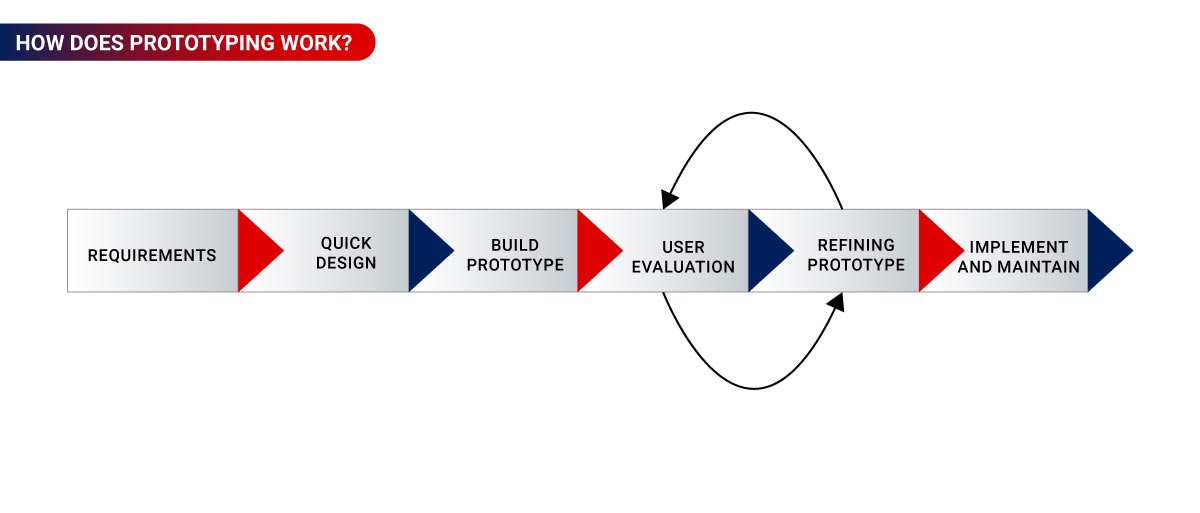
What are the Main Features of Prototyping?
The minimum set of features of prototyping includes the following:
- Collect Early Feedback: You can gather valuable feedback on your product early and make necessary improvements and refinements.
- Rapid Development: It helps you identify design and development mistakes at an early stage, saving time and effort in rectifying them later.
- Time and Cost Efficiency: It is more efficient and cost-effective than full-scale development. You can validate and refine your ideas without committing extensive resources upfront.
- Comprehensive Presentation: Prototyping helps combine complex ideas into a unified and wide format, making communicating and visualizing the overall concept easier.
- Reusability: You can leverage prototypes in future projects, particularly more complex ones, saving time and effort in developing subsequent products.
Types of Prototype Models
There are four types of prototype models, including the following:
- Rapid: Rapid prototyping is known as a closed-ended prototype model; it is a quick solution considering only preliminary requirements. You can revise it after user feedback.
- Evolutionary: It involves the continuous development of prototypes, where each is an improved sequel of the previous prototype and developed after incorporating user feedback.
- Incremental: Here, the final product is divided into small parts, each with its separate prototype. So, individual prototypes are developed, tested, and merged into the final product.
- Extreme: Explicitly used in web development, this model involves building multiple web prototypes and integrating them into the final product.
Examples of Successful Prototypes
Check out these exciting prototype examples:
- Twitter launched its prototype app called twttr in 2019 and invited users to test it. The purpose was to experiment with new features focused on improving the readability of long conversations on Twitter [3].
- iPhone developed a prototype back in 1983, which showcased a touchscreen and stylus input. It was pretty impressive for a device of that era. This prototype underwent testing and refinement, and the first iPhone was launched in 2007 [4].
Prototype Benefits
Desired prototype benefits businesses in many ways. Here are the key reasons to use prototypes:
- Prototypes gather early feedback from users and stakeholders, ensuring alignment with expectations and behaviors.
- It reveals and addresses design and development mistakes before full-scale production, minimizing flaws.
- Testing and refining ideas through prototyping prevent costly rework and optimizing resources.
- Well-tested prototypes impress potential investors, demonstrating product seriousness and potential.
Prototyping Best Practices
Critical considerations for successful prototyping include the following:
- Incorporate Realistic Content and Interactions: To effectively evaluate your ideas, ensure that your prototype has authentic content and interactions. By incorporating realistic elements, you can gain more accurate insights into the user experience.
- Map Out User Journeys: Visualize and assess user flows by mapping out the path users will take within your website or app. It helps identify potential issues and ensures a seamless and intuitive user experience.
- Foster Collaborative Design: Emphasize teamwork and collaboration to leverage diverse perspectives and collectively improve the design, resulting in a more refined end product.
- Test Across Devices and Platforms: To obtain comprehensive feedback, test your prototypes on several devices and platforms. It helps identify and address compatibility or usability issues across different environments.
- Continuously Test and Iterate: Prototyping is an iterative process, so regularly conduct user testing and gather feedback. Use this information to refine your design, adapting it to meet the evolving needs of your target audience.
What is an MVP?
An MVP stands for a minimum viable product. It differs from a Proof of Concept (PoC) or Prototype as it is a functional product with minimal features designed to meet end users’ needs. The purpose of an MVP is to assess market and user acceptance, identify favored features, and determine what should be added in later stages of development. So, an MVP is an evolution from PoC and prototypes but not the product’s final version.
How Does an MVP Work?
MVP is the fastest approach to offering a reliable solution to your target audience with basic features. It is an opportunity to identify the initial product’s strengths and weaknesses from the product’s initial users.
- The first stage acts as the foundation of MVP and the problem it aims to solve.
- Identify a minimal set of features to address the value proposition. It validates hypotheses and gauge demand while satisfying early adopters.
- The focus is to offer a realistic user experience by offering a functional solution with clean code, prioritizing user-generated data and feedback for refinement.
- Minimal does not mean inferior; it emphasizes value-driven development based on user insights for early adopters to gather and analyze the feedback.
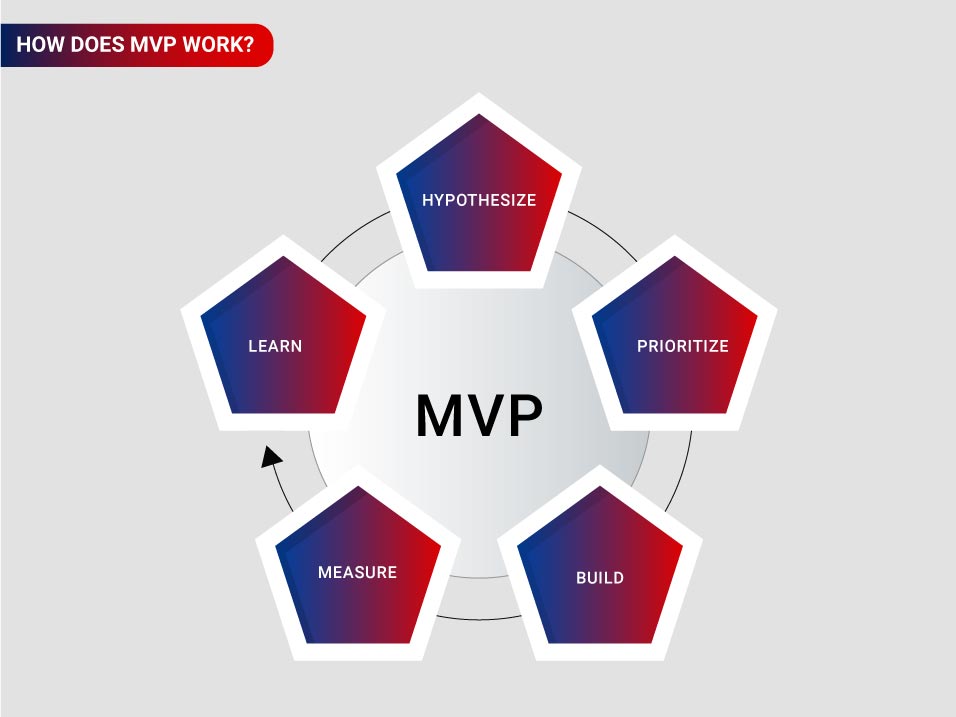
Main Characteristics of an MVP
Here are the significant features of a successful MVP:
- Cost-effective Production: It’s an economical version of the final product, enabling quick launch and learning without excessive time and financial investment. It’s particularly beneficial for startups seeking investments.
- Core Feature Focus: It showcases the essence of the product, although one core feature may not always convey the entire product idea. Developing too many features early can distract users and hinder accurate customer feedback.
- Value-Driven: It reveals the pain points of early users and allows you to iterate the final product based on their requirements.
- Targeted Audience: It focuses on a specific niche, not a broad one, and gradually refines the target user persona. It helps you solve problems faster than your competitors.
- Iterative development: Prioritizes the core concept and incrementally builds additional features based on early user feedback. It saves time usually wasted on unnecessary elements.
Successful Minimum Viable Product Examples
Here are successful Minimum Viable Product examples:
- Twitter owes its origins to Odeo, whose podcasting business was threatened by iTunes in 2001. To survive, Odeo organized hackathons that sparked the idea for a new platform. Initially used internally as “Twittr,” it gained popularity as employees started spending money to post on it. This MVP stage evolved into the widely loved social media giant we know as Twitter [5].
For more real-life examples of how MVP benefits, please refer to this informative piece of content on MVP Development for Startups.
MVP Benefits
Creating an MVP helps to reduce and eliminate the probability of failure. It evaluates the worth before investing valuable time and funds. So listed are the few benefits to help you understand the significant importance of MVP.
- Faster time to market
- User validation and feedback
- Cost-effective development
- Risk mitigation
- Competitive advantage
- Iterative improvement
- Acceptance of target audience for product readiness
MVP Best Practices
Here are the significant points to consider for a successful MVP:
- Swift MVP Delivery: Deliver it early to gather customer feedback and understand areas for improvement, accelerating the product development process.
- Handling Requirement Volatility: Take time to observe customers, gather feedback from a diverse audience, and make informed decisions for a stable product roadmap.
- Selecting the Right Platform: Focus on the most popular platform among your target audience. It effectively validates your solution’s perception, facilitating insightful decision-making for future development.
- Learning from MVP Setbacks: Don’t disqualify the MVP if it receives negative feedback. Investigate the reasons behind dissatisfaction to identify core issues. Adjust, pivot, or consider a different audience for a successful outcome.
PoC vs MVP vs Prototype: What’s the Difference
There is a significant difference between Proof of Concept vs Prototype vs MVP, not in their purposes but also in approaches. Let’s have a look at each of their objectives.
| Specification | PoC | MVP | Prototype |
| Goal | To prove the tech concept is feasible | To solve the problem for early customers and find product-market fit | To visulize the product and user flows and demonstrate the business concept |
| Form of implementation | Tech solution with a simplistic UI | The first version of your product | Visual clickable mobile/web prototype that requires no coding |
| When to Develop | The beginning of the pre-Product stage | The beginning of the product stage | At the very end of the product definition stage |
| Development Time | Days to Weeks | Months | Weeks |
| Audience | Internal domain experts | Investors and early adopters | Stakeholders and focus groups |
| Resource Involvement | It needs some tech expertise and requires coding, but the code quality isn’t the matter; minimal UI requirements. | Involves tech expertise, UX/UI, and coding but requires fewer resources than similar full-scale Products | Requires almost or no coding/tech expertise and relies mainly on UX/UI patterns |
| Use Case | Test technical aspects | Access user feedback and get funding | Pitch the product idea and find gaps in the flow |
| Risk Evaluation | Reduce technical risks | Reduce the risk of product development | Reduce user dissatisfaction risk |
| Investment | Small budget | Well-defined budget | Medium budget |
| Revenue | No revenue as it is not for sale | It creates investment and sells to early adopters | It helps generate further investment |
| Further Usage | Leads to Prototype or MVP development | Leads to full-fledged product development | Leads to MVP development |
When to use PoC?
You can use a Proof of Concept (PoC) when:
- Validate your new product idea before any sort of investment.
- Share internal knowledge about your product idea with team members
- Secure investment by verifying industrial utility.
- To ensure your product’s industrial utility.
- To make informed decisions before committing resources.
When to use Prototype?
You can use a Prototype to:
- Visualize the product’s flow, appearance, and experience.
- To secure funds by showcasing design and user experience to investors.
- Gather initial feedback from focus groups to validate the concept.
- Meet tight deadlines when quick idea demonstration is needed.
- Evaluate user acceptance before moving forward with development.
When to use MVP?
You must use an MVP when you want to:
- Mitigate the risk of failure by validating assumptions with necessary features.
- Optimize development by focusing on essential features with minimal time and cost investment.
- Gather early user feedback as a foundation for iterative improvements.
- Achieve higher customer retention at a lower cost and accelerate the monetization of your idea.
Why Partner with Rishabh Software
I hope your purpose of landing on this blog post to understand the differences between PoC vs Prototype vs MVP is served. As a leading software product development services provider for over two decades, we can help you develop PoC, Prototype, and MVP (whichever is ideal for your business). We provide technical consultation and guidance through each step of the product development process. Our highly skilled software product team ensures you build a successful product that meets your users’ requirements.
Frequently Asked Questions
Q: Are PoC and Prototype the Same?
A proof of concept (POC) is a practical test to see if a product can be built using a specific technology. In contrast, a prototype is a working model with limited features. Prototyping involves creating a functional version, while a POC focuses on verifying feasibility.
Q: What is the difference between an MVP and a Prototype?
A: MVP (Minimum Viable Product) and Prototype are often confused but differ significantly. Here’s a more straightforward explanation comparing MVP with Prototype:
- Purpose: An MVP is made to gather user feedback and validate the software, while a prototype is built to test the idea and validate the problem and solution design.
- Functionality: An MVP is a fully functional product with minimal features, while a prototype is a simulated version that looks and feels real but doesn’t have all the features.
- Target audience: MVPs are usually for public use, allowing users to experience the product like potential customers. Prototypes are often kept private for testing purposes.
- Complexity: Prototypes are simple compared to MVPs. MVPs are fully developed with essential software features.
- Cost: Developing a prototype is less expensive, while an MVP requires proper budget estimation.
- Time: Building an MVP takes longer than creating a prototype. MVPs test efficiency and gather user feedback, while prototypes test product assumptions.
Q: Does POC Come Before MVP?
A: Typically, during the initial stages of a project, a proof of concept is carried out to test the feasibility of an idea. It’s like a small internal project to see if the idea can work. If the PoC is successful, the team can proceed to build a prototype or an MVP.
Footnotes:
2. https://www.lfdecentralizedtrust.org/case-studies/walmart-case-study
3. https://techcrunch.com/2019/03/11/twitters-new-prototype-app-twttr-launches-today/
4. https://www.businessinsider.com/the-original-iphone-2011-12?IR=T
5. https://whatisthebusinessmodelof.com/business-models/twitter-business-model/
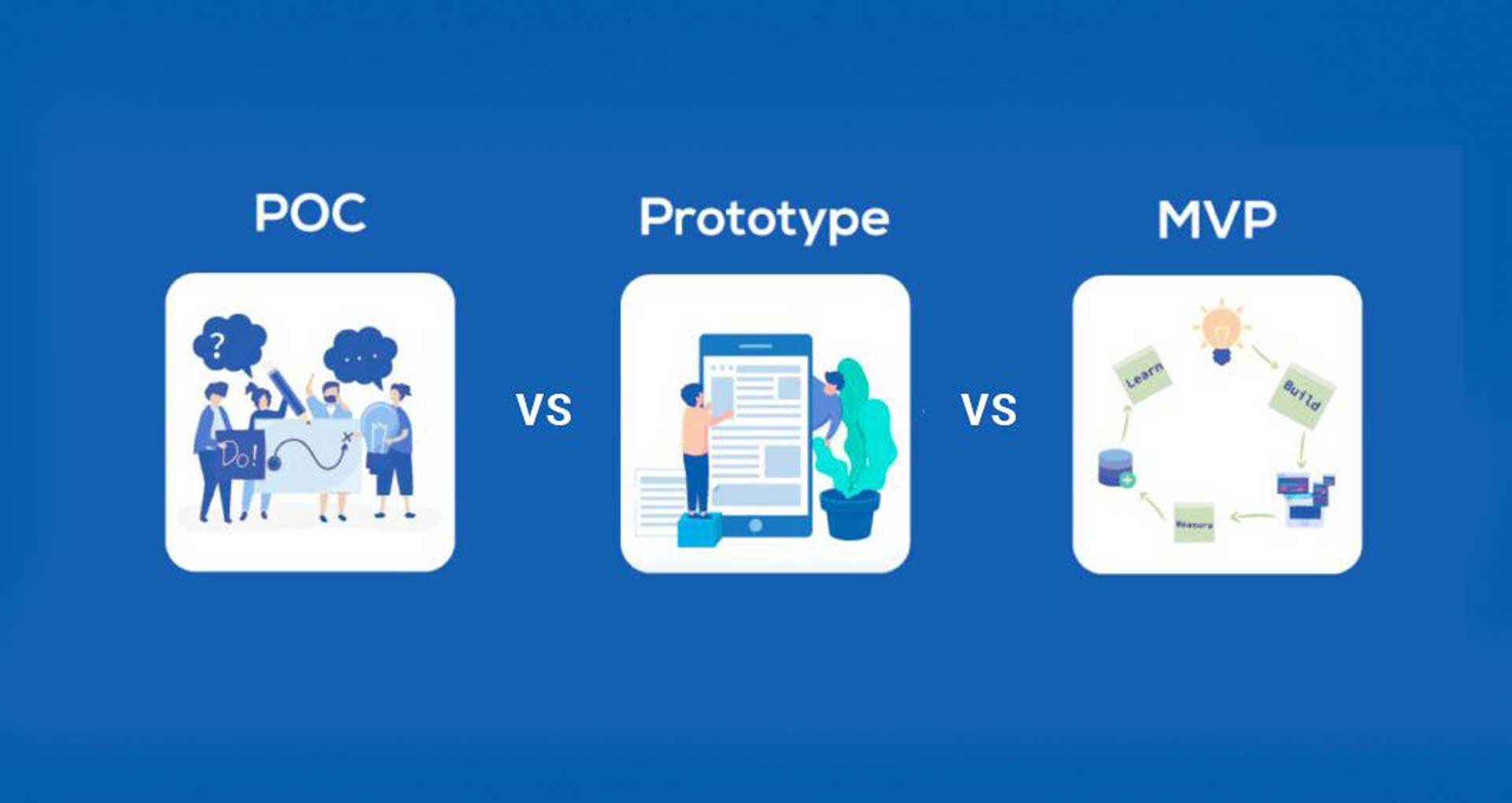
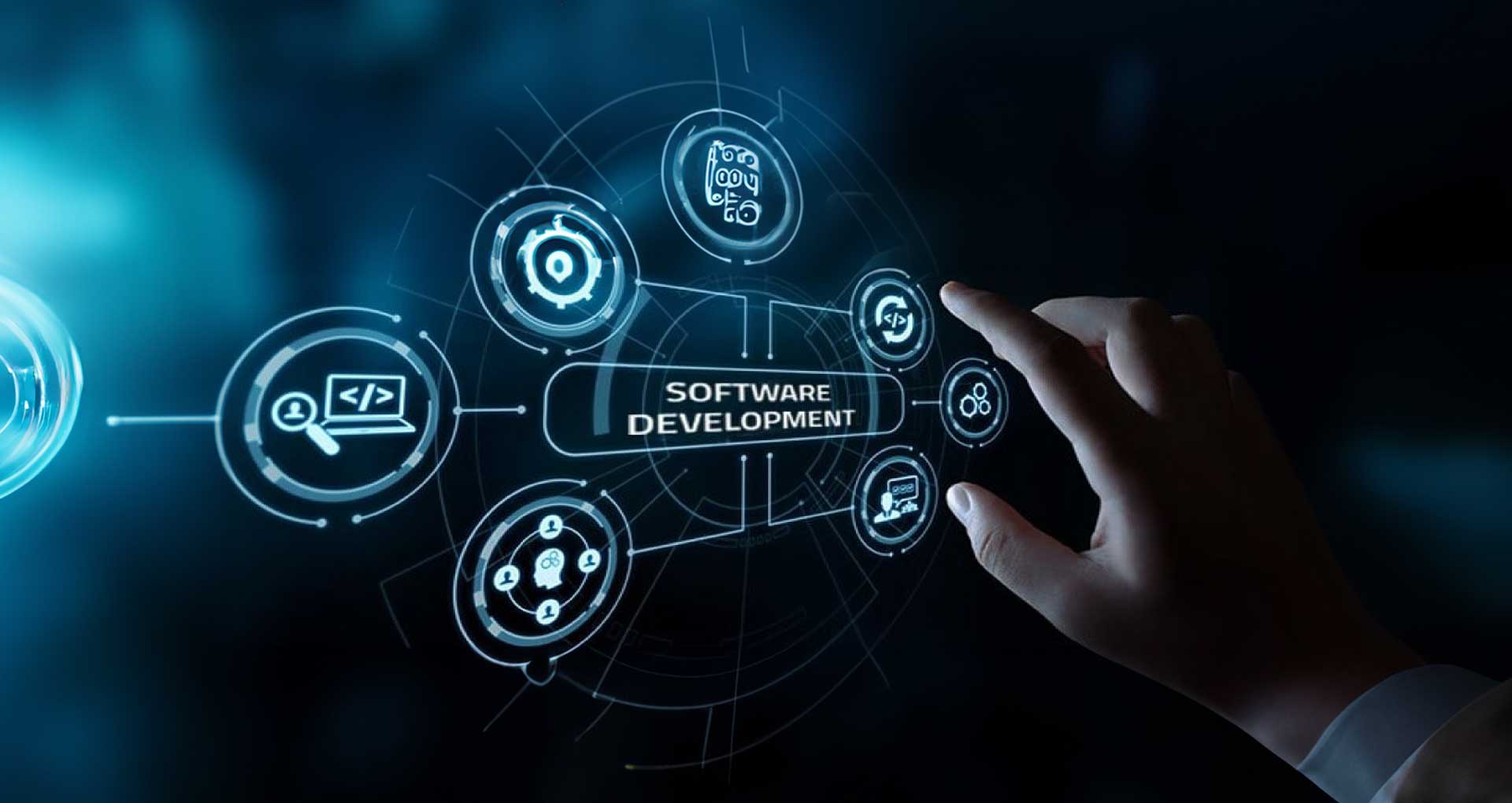









 30 Min
30 Min


